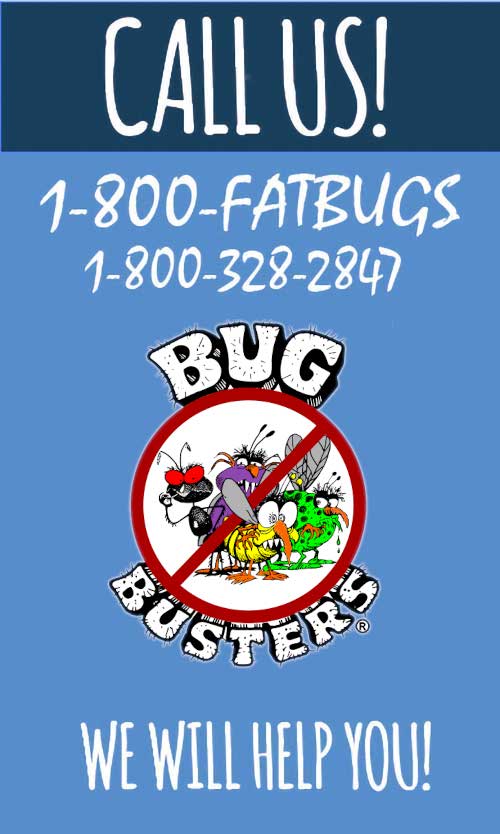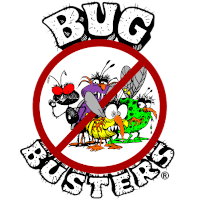Project Description

To schedule a Pre-Treatment
Call Us Today!
Bug Busters has been serving the Pacific Northwest since 1987. We are your Pre-Treatment experts! We look forward to being of service to you!
If you have any additional questions that are not addressed within the text below: please contact us directly at 503-538-3992 or toll-free at 800-328-2847 or leave us your e-mail address using form below and we will reach you.
Introduction
This article is for anyone that is remodeling his or her home, planning to build, or in the process of building a new home. It will address pest control issues and concerns that will help you construct a home which will be best protected from wood destroying pests such as; Subterranean Termites, Wood Boring Beetles and especially here in the Pacific Northwest – Carpenter Ants!
Most people give very little thought about pre-treating a home during construction. This article will outline these treatments after we discuss several misunderstandings the general public has about building materials and construction methods. Although fungus is not an insect, it is also mentioned since it very often is a pre-cursor to wood damage both directly and indirectly.
Insect control is basic maintenance, and part of home ownership
Virtually all pests find their way into our homes through cracks, crevices and hundreds of routes of entry, which are available in every house. There are too many to list, and the point of this discussion is to make you aware that most pests will use these points of entry to gain a foothold into your home. Once established, they will breed and grow in number. Many people think there is something magical that can be done before, during or right after a home is built which will make it insect proof. This is simply not the case. There is no one thing that will make your home free of insects forever, and the pesticides available to both homeowners and professional pest control operators are designed to breakdown very quickly as mandated by the E.P.A. Since most infestations occur after the home is built, ongoing preventive maintenance outside the home is fundamental to keep invading pests to a minimum, however pre-treating is the key to getting started on the right track to keeping your home free of pests for years to come.
What about certain types of wood (pressure treated, cedar, etc.) or construction methods that make claims to be insect proof? Though termites and other wood destroying organisms will typically choose another wood source over pressure treated lumber, please keep in mind that pressure treated wood is used on less than 1% of the entire structure (typically only on the sill-plate, and perhaps a few other areas). Another common misconception is that cedar is insect proof. People have stated that they choose their house to be made with cedar because the builder said termites and other pests will never touch it. Don’t choose cedar for the siding on your home because you have been led to believe it will be pest proof- choose it because you like the look!
Every crack & crevice leading into our home will be caulked and sealed so pests will never be able to enter
It’s not going to happen. However, it is worth the effort. But again, this is not pest control or pre-treating. This is mechanical control. In other words, by minimizing gaps and seams through which insects can enter you can reduce the amount of pests. But remember, insect infestations generally don’t occur because of continuous migration inside. Most happen because one got inside and produced young. Remember, it only takes one to start a problem, therefore, if you want to stop an infestation from happening in the home, you will need to:
- Minimize routes of entry by doing a good sealing job. Keep in mind that this will require your attention during multiple stages of construction, starting just after the foundation is poured, or beforehand if you wish to pre-treat against subterranean termites as well.
- Pre-treat the exposed wall voids during the course of construction. In order to achieve maximum protection from all unwanted pests, this must be accomplished before the insulation is installed in the wall voids. Please call us for further details and pricing.
- Minimize the amount of pests living immediately adjacent to your home with ongoing preventive maintenance outside. This combination will prove to be most effective.
All the lumber being used for our home has been kiln dried so there is no risk of pests coming in with it
Although kiln drying will help to kill off many wood-destroying pests, lumber can get re-infested simply by being stored. Chances are some of the wood used for your home will have pests in it, as such; this wood presents a real and clear danger of spreading this activity.
Homes with basements don't develop termite or pest problems
Although less likely to develop a pest problem, homes with un-finished basements are easier to inspect and treat. However, once the basement is finished, all this changes. Furthermore, attempting to locate the source of a pest problem in a finished basement can be time consuming and costly (compared to a home with a crawl area that still allows for inspection and treatment of the readily accessible areas).
What are the REAL problem areas and HOW to treat them
Subterranean Termites
Living in the Pacific Northwest we typically do not have too many problems in new construction relating to this insect. However, be wary of the service company that is only charging you $100.00 to $200.00. Most homes will require a cost of chemical alone that will far exceed these amounts, and the treatment will have to be done over several days and during different stages of construction. Please contact our office for further specific information relating to scheduling and costs of this treatment at 1-800-328-2847.
Powder Post Beetles and Old House Borers
These wood eating beetles occur in virtually all types of wood. There are softwood eating borers as well as hard wood species. This article will not get into the biology of this insect. The fact of the matter is that these pests can and are put in place unknowingly by contractors all around the country. There is nothing more depressing than seeing the dust of exit holes a few months or a year after the home has been built. This is particularly true if you are building in a region with high moisture. Humidity allows these beetles to thrive in crawl spaces and attics. One final word about powder post beetles; if you are building a log home, definitely contact us before you finish the home. Although most log home builders will make an honest effort to insure the wood is beetle free, there are simply too many logs being used, which have problems. Forget that the logs are kiln dried or dipped in Timbor, do yourself a favor and have us professionally treat them with Boracare while the wood is new and unfinished.
Fungus
Although not an insect, it certainly is a wood-destroying organism. First, the fungus itself will feed on cellulose, which weakens it both structurally and cosmetically. Secondly, such moisture and fungus growth ultimately will lead to one of several types of pests including any of the major wood destroying ones listed above. Most fungus problems are the result of a long-term moisture supply, generally small and hard to notice, which works its way into wood. This can occur in any number of ways. The most common being a lack of proper ventilation to the crawl area(s) as a result of insufficient ventilation, and / or the lack of a vapor barrier over the soil.
Carpenter Ants
Although they are very different from termites and wood boring beetles. The big difference is that they don’t actually eat the wood. Carpenter Ants will extensively excavate it for nesting very often resulting in extensive damage and costly repairs. Although there are many pests that can infest homes after construction, Carpenter Ants are of significant economic importance due to the damage they will cause. Pre-treating your home for Carpenters Ants is best accomplished prior to the insulation being installed in the walls of your home Please contact our office for further specific information relating to scheduling and costs of this treatment at 1-800-328-2847.
Summary
The recurring theme of all pest control is that it is so much cheaper to do some simple preventive maintenance as opposed to trying to control a local infestation. In other words, simply treating the outside of the home regularly will help to minimize insects so that few if any are left to invade the house. This practice is both easy and inexpensive. Yet most homeowners are willing to wait until they have an active infestation to start treating. By this time they may have incurred a large expense to repair damaged wood as well as the need to employ more products to control the infestation at hand.
The problem is similar to the concept of changing the motor oil in your car. Most people do this on a regular basis if they own a car. The reason is simple. By changing the oil you will avoid major motor damage, which in turn will avoid costly repairs. The same logic can be applied to pest control. It is so much cheaper to treat around the outside of the home on a regular basis to prevent infestations from ever happening (ideally in conjunction with a pre-treatment). These treatments can be done monthly or every few months, depending on the level of �pest free living you desire.
If you are building a home and want to do so using products and design methods which help to reduce pests and pest activity, it can be done without major sacrifice. We hope to have dispelled some misunderstandings about certain building materials and at the same time educated you about some of the real problems that exist.

